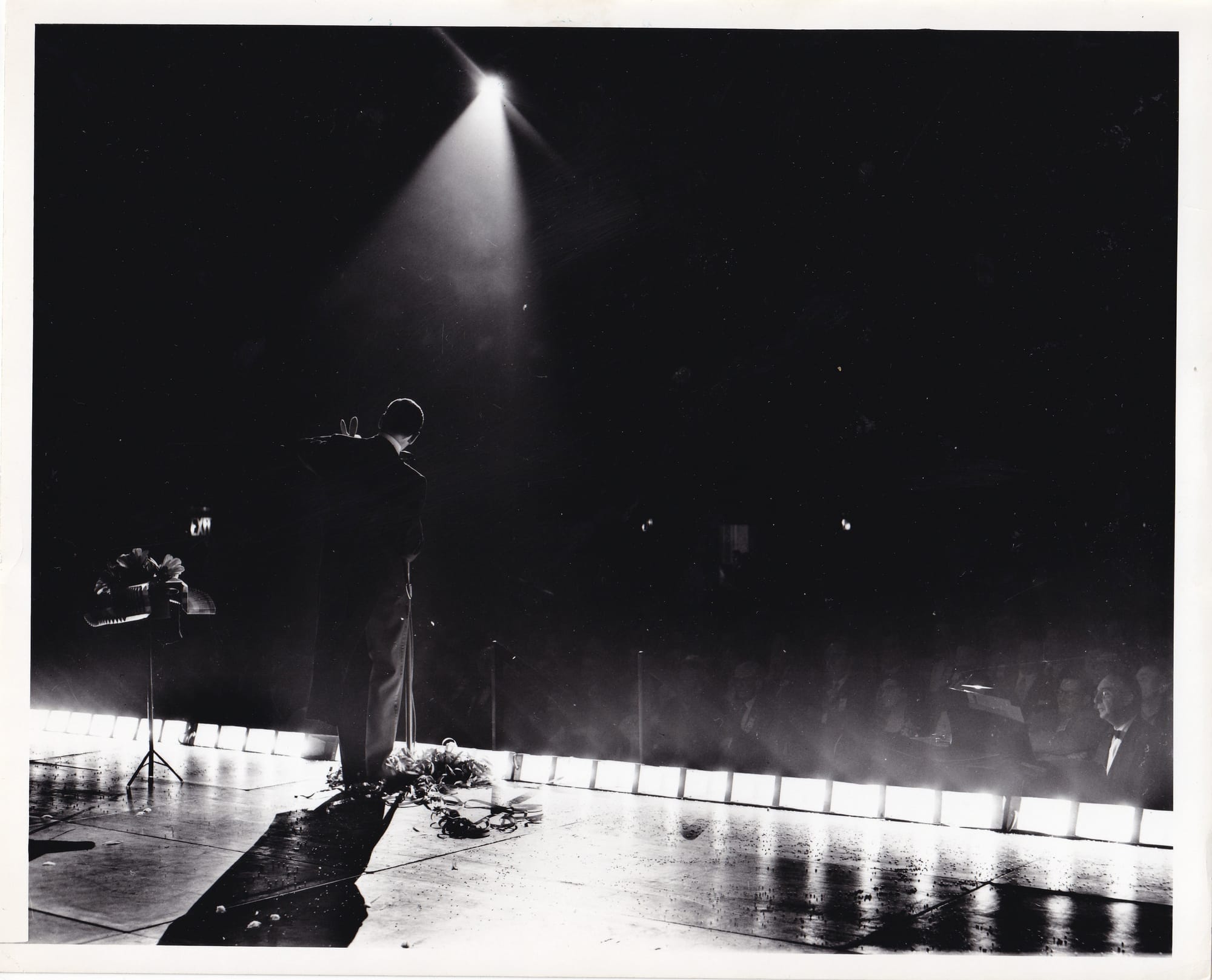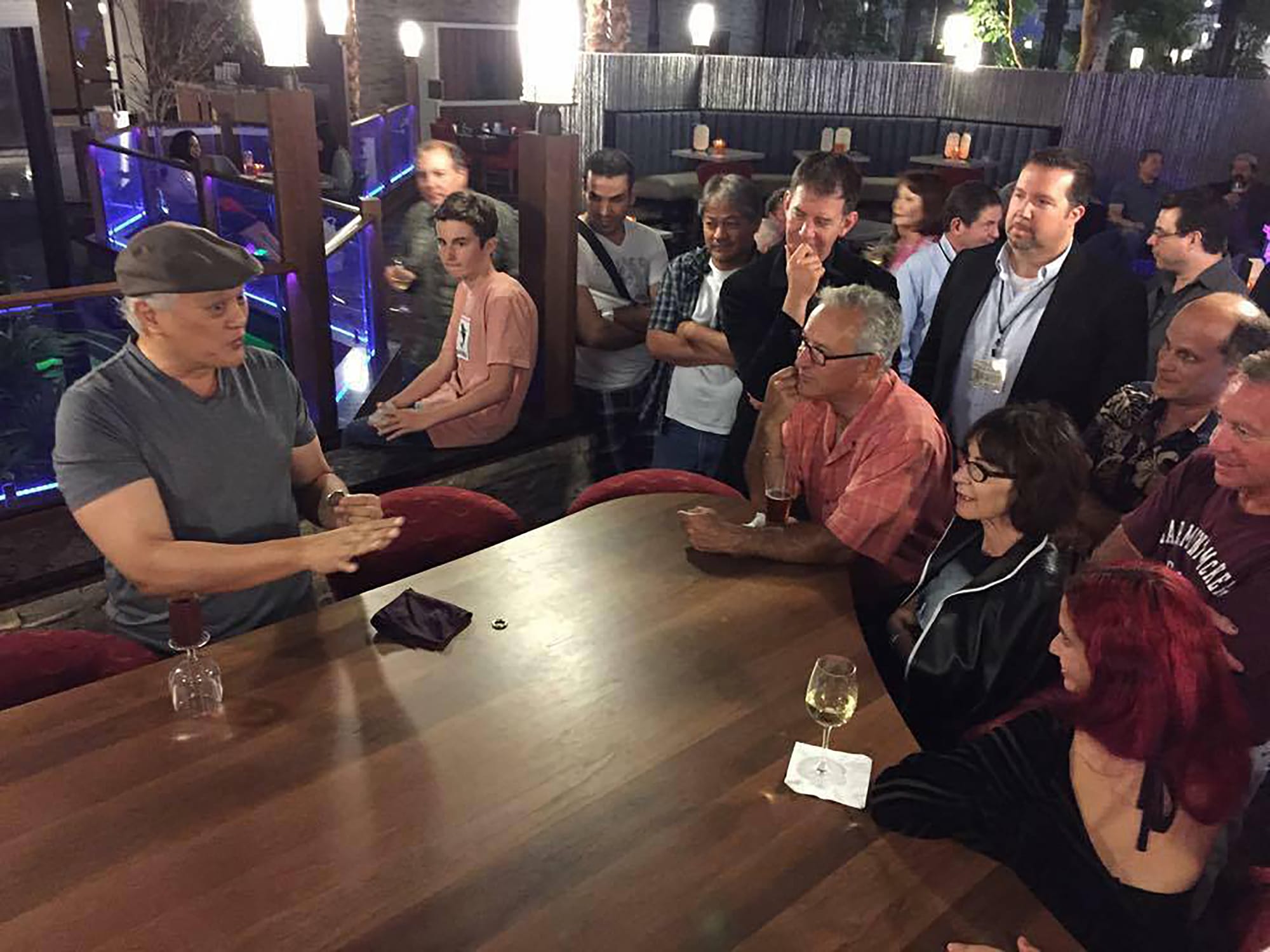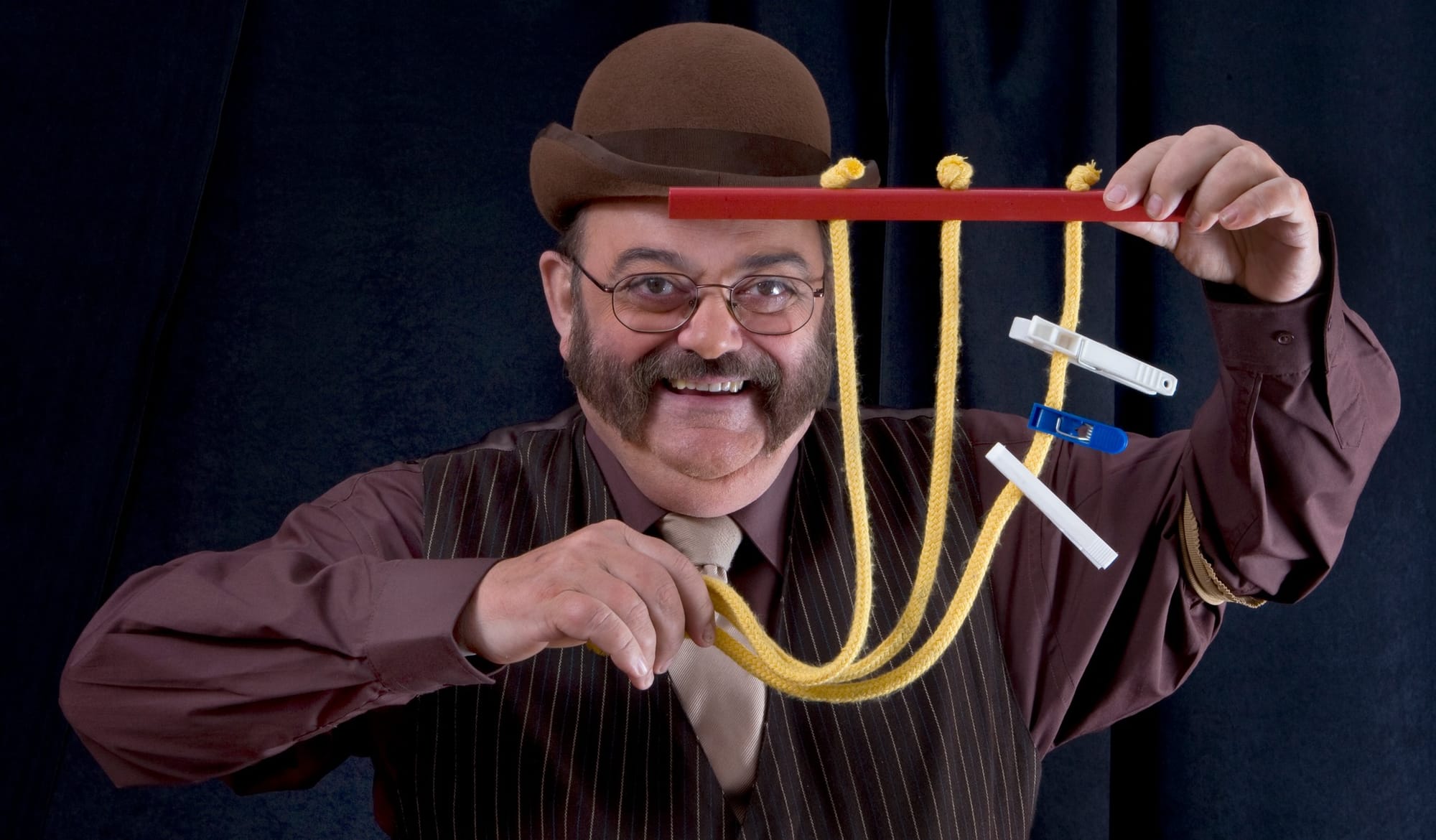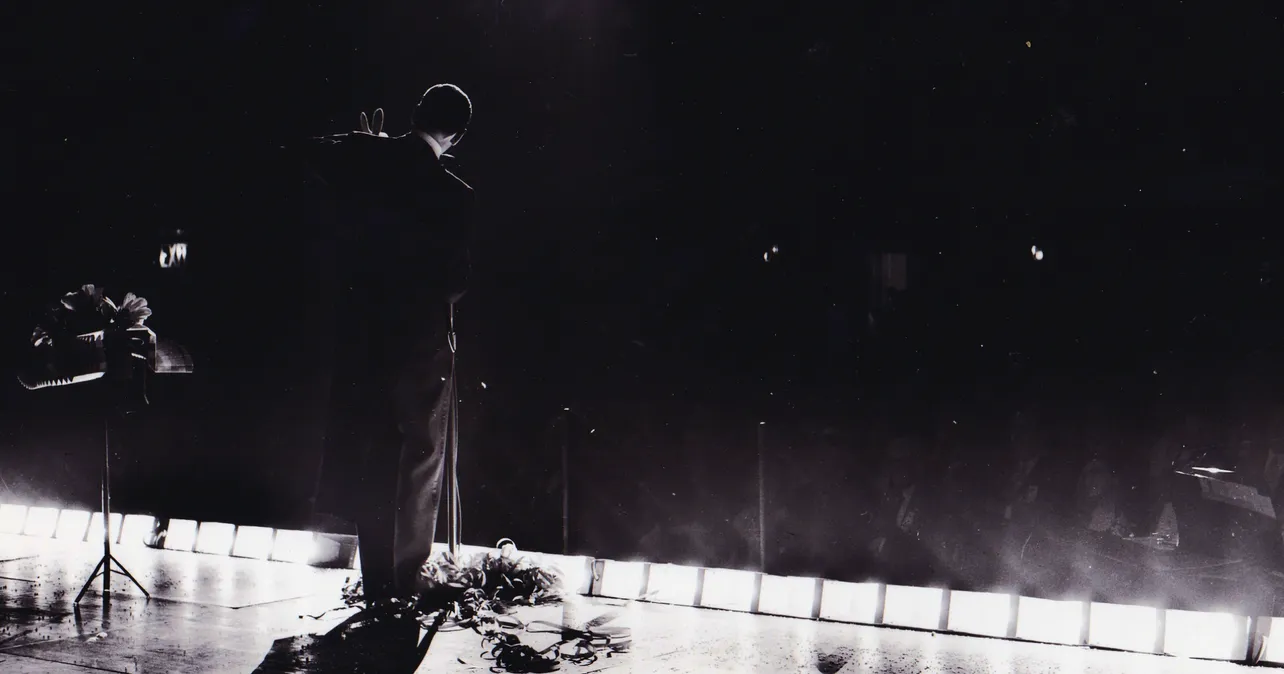Orson Welles once told me, “No one in the theater chooses to do a one-man show. In many ways, it’s antithetical to the way people think in the theater. They do it because that’s all that’s left to them; they do it because it’s their chance to control their product and give themselves a voice.”
But the idea of a one-person magic production, a theatrical show that is centered around our specialty, has been maneuvering in and out of style over the last few years, with some brilliant recent examples. The public’s expanded interest in magic has, in special cases, pushed it over into their category of theater. This summer, two prominent magic conventions have carved out special opportunities to present one-person productions for their audiences.
For June, Genii put together a roundtable discussion of magic as theater and magic as one-person productions with a group of creative professionals. It’s a chance to hear our art discussed and analyzed from the point of view of a Disney creative director, or a Broadway expert. Our participants were Benjamin Schrader, Jenny Weinbloom, and Alexander (Sandy) Marshall. Inside the magazine, you’ll find “The Theater of One Person, Making Magic.”

When we thought about images to encapsulate the story, we suddenly remembered Irving Desfor’s beautiful and haunting photo of Jay Marshall from a 1951 convention. Yes, that’s what it feels like on a stage: lonely and disorienting.
It’s especially odd to see Jay’s classic comedy routine, frozen in front of that eerie darkness. (Lefty’s ears just pop above his left shoulder.) While we were all sharing in the laughter, this is, indeed, what Jay and Lefty faced.
Or, as Orson Welles said, with some amusement, “Oh, it’s like facing a monster, some terrible, mysterious monster! And you know, you can only evaluate that monster from the sound it makes. A sort of dull roar. There are good audiences, and bad audiences, but every audience has just one personality. Have you noticed that? You never have an audience where there are jolly people laughing over here, and unhappy people over there. No, it’s just one monster that you’re facing in the darkness, and you’re trying to make that monster happy.”
I want to thank the amazing American Museum of Magic in Marshall, Michigan, for permission to use Irving Desfor’s photo for our June cover. Desfor tiptoed out onto the stage for this unusual view, so we wanted you to see the whole photo, including the tumult of the performance—that is, the confetti, hat coils, and spring flowers!
Jay Marshall and Lefty seemed our perfect choice, perhaps because his son, Alexander (Sandy), served as one of the experts on our roundtable. But the idea of facing the unexpected audience and boldly turning communication into entertainment also serves as an apt analogy for our second feature.
WATCH: June 2025 • The Genii Speak
This month, Chloe Olewitz wrote a fascinating article about Deaf magicians, Deaf audiences, and the intricate process of translating theater into American Sign Language. I suspect you’ve seen performances that were being translated in real time; it happens at magic conventions. But I’m sure that most of us haven’t understood the sensibilities and sensitivities behind the scenes, especially as the process applies to a magic performance. You’ll enjoy this surprising look at our world, through a new lens: “Magic Access: Understanding the Role of the ASL Interpreter.”

Let me suggest that you also follow our June Genii's Links and meet Chloe Olewitz—particularly if you’ve been reading her journalistic work on magic for years. Chloe has been writing for this magazine, in THE EYE, in countless feature stories, and as our editor at large, writing about magic’s neat intersections (or collisions) with popular culture. She has a great sense of how these subjects can be told to enhance and explain our art, and she sometimes gets us scratching our heads about these puzzling situations. I’m proud to say that our editor at large is my guest on the video Genii Speak, and I enjoyed talking with her about these subjects.
Finally, we have a chance to look at an amazing example of one person on stage. Craig Mitchell offers an early review of Derren Brown’s new stage show, Only Human. Of course, continuing his popular formula, Brown doesn’t strictly work by himself; there’s always a group of assistants, guides, and facilitators to help with the audience volunteers—but there is no doubt that the show orbits the point of view of one insightful performer. Please take a look at “Derren Brown: More Than Slightly Superhuman.”
The Department of Corrections: In last month’s issue, I interviewed Vanessa Armstrong for our video feature, and I mentioned how Chloe Olewitz originated THE EYE column, and how Vanessa Armstrong has been in charge of it for the past years. But that was a mistake. The original editor of THE EYE, Genii’s special news section, was author and publisher, and a long-time friend Todd Karr. He deserves the credit for originating this popular column.


Curtis Kam (photo via Kam's Facebook page) and Jean Merlin (courtesy of Marc Merlin)
Last month, we received news of the loss of two wonderful magicians, Jean Merlin and Curtis Kam. It would be hard to imagine two magicians more different—from two different cultures, devoted to different ideals. And it would be hard to imagine two magicians as equally respected and inspirational during their lifetimes. We’re fortunate to have remembrances from their friends, admirers, and students: Gaëtan Bloom, Jean-Jacques Sanvert, and Tom Dobrowolski. We’re grateful for their heartfelt tributes.
We've just weathered the storm, in the form of an increase in prices, which took effect with this June issue. There it is: “$12.99” on the cover! It was necessary, it was inevitable. And it was very interesting to see the response. We anticipated the worst, of course. Our subscribers have a right to complain. We realized, early in this process, that we had to be honest about it all. We couldn’t make the point that the new Genii was now worth twice as much as the old Genii. It isn’t. We had to make the more complicated point that Genii has been underpriced for well over a decade, a business model that couldn’t continue. As there hadn’t been a price increase for all those years, everyone had been getting an unrealistic bargain. Right now, as a new magazine, a new website, and a new business model are put together, Genii has to take the step to be sustainable.
We are grateful to our readers and subscribers for their response. Nearly everyone seemed to get it. Many readers sent messages of support and encouragement, and we were encouraged by the overall response. You’ll find more about our price increase, and a few sincerely offered grumbles, over in June Mailbox.

